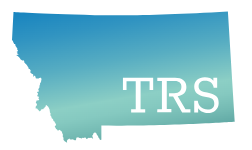working-after-retirement
Working After Retirement
Why?
TRS must comply with all Internal Revenue Code (IRC) qualification standards for public pensions. One such standard prohibits TRS from paying monthly retirement benefits to a member who has not terminated employment in all positions covered by the retirement system.
Before TRS can process a vested member’s application for retirement benefits, it is necessary to confirm there has been a bona fide separation from service (i.e., the employer-employee relationship has been completely severed). Depending on how recently the member was employed, TRS may require the employer to certify that the member has terminated employment and is not planning to return.
To avoid ambiguity regarding termination of employment, TRS law requires the retiree to have a break in service of a specified length of time (see §19-20-734, MCA) before returning to work in any TRS-reportable capacity. If a TRS employer allows a newly retired member to return to work too soon, it could mean the member was not eligible for retirement at all and may have to repay to TRS all benefits received to date, with interest.
TRS retirees who have satisfied the break-in-service requirement may choose to work for a TRS employer in some capacity. Both parties must notify TRS of the arrangement and comply with applicable rules, such as the employer’s requirement to report the retiree’s earnings to TRS each month. In addition, nearly all working retirees are subject to an annual earnings limitation, and TRS may temporarily reduce or suspend the retiree’s monthly benefit when their earnings exceed the limit.
- Working after retirement is a complex topic. For details on current requirements, annual earnings limitations, and exceptions that may apply, please read the Fact Sheets listed below and all other materials referenced within them.
